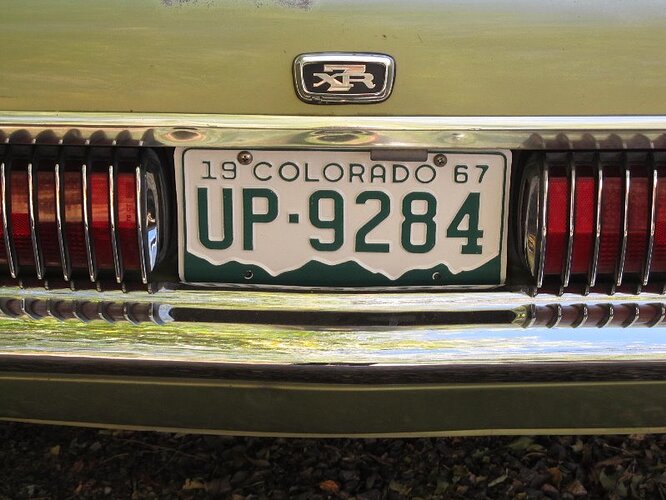Just out of interest,
Here in the UK, a car is assigned a regerstration number when it’s brand new. In the old days it would be 3 letters (showing loosely what area it was first from) this was followed by 3 numbers and then a letter showing the year (although this ran April to next April). The car would usually keep this number until it was scrapped.
How does it work in the States?
The law varies from state to state In New York the plate does not stay with the car when ownership changes. The plate is either distroyed or it can be used on the replacement car. Ex if I sell or dispose of my car I can use the plate from that car on my new car. The letter and number sequance has changed over the years. Now it is 3 letters and 4 numbers on passenger cars commercial is 2 letters and numbers. You also have vanity plates in NY where you can pay an extra fee to have your plate say Ex: 69 Cougar max combo of letters and numbers is 8. We also have vintage plates (old unrestored plates) that match the year the car was built. The car must be 25 years or older for vanity plates.
Thanks, every days a school day ![]()
In California, it’s equally complicated.
Black/gold (aka CA black plates) were issued for cars from '63 through about calendar year '69, depending somewhat on DMV office location with an sequence of ABC123. Beginning in very late '69/early '70, blue/gold plates began to be issued with a sequence of 123ABC through 999ZZZ. After that, the sequence became 1ABC123, but was was never fully completed on blue plates, but was discontinued in 1987. Personalized plates were first available in California approximately 1972. There have been other series/styles of plates over the years and since 1998, the standard California license plate style is white with a red “California” script" and embossed blue letters in the same 1ABC123 sequence, which is currently up to the 8ABC123 range. Additionally, due to the popularity of the old CA black plates, the CA State Legislature authorized the reissuance of them today (for an extra fee, of course!). The sequence is A123B0 and these may also be personalized.
If a car was issued black/gold plates in the '63-'69 era and has been continuously registered/in service, said plates are still valid (as they are on my car, for example). It is also possible, through the CA DMV Year of Manufacture program, to put a pair of “clear” black/gold plates on a car that does not currently have them for whatever reason. This rule was recently extended so now a pair of “clear” blue/gold plates can be placed on a '70-'80 model year car.
One additional interesting item to note: when California switched over from gold/black to black/gold plates in 1963, each local DMV office was given a supply, which was issued until exhausted. Replenishment continued until about 1965/1966 in an organized manner that was tracked. The cool thing about this is if a car from that era still wears its original black/gold plates, you can tell the general vicinity of where it was licensed/purchased. Unfortunately, this does not extend to late '66, so this information is not available for our Cougars.
I was about to respond about Texas’ license plates which have changed somewhat over the years until I discovered a PDF file on the Department of Motor Vehicles site, “The History of Texas License Plates” … 255 pages. Uh, no.
My home state of Alabama used a much simpler but quirky system with the 1, 2 or 3 prefixes for the largest 3 counties (by population) and prefixes from 4 to 67 (or so) corresponding to the remaining counties in alphabetical order. Based on some newer Alabama plates I’ve seen here, it looks like they changed that system.
I’m sure they all have methods to the madness but… ![]()
![]()
![]()
I actually spent an hour at the tax office last month while they thumbed through that 255-page Texas plate book to make sure the 1967 plates I found at an antique store up in Brenham were ok for me to use as classic plates. I paid $70 for the pair. I noticed that John’s Mustang in Houston is selling classic pairs for $195 - $250 depending on the year.
Yep, different in every state. In Montana the first number on the plate is a “county code” to show which county a car is from.
In Washington they were coded to county’s up until 1981. Here is a history of them,
https://en.wikipedia.org/wiki/Vehicle_registration_plates_of_Washington_(state)
Interesting - I would have thought the tag numbers are retired at some point but I suppose as long as it corresponds to the car, it would be OK.
Some states allow the use of vintage plates on vintage vehicles, provided it’s not a duplicate of a plate that is already issued.
I bought my brand new, never issued plates from a fellow down in Austin.
Funny thing - there was a dark green '69 at the Tulsa show with a plate that was within 3 of mine.
